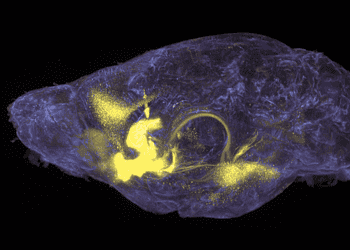Scientists know that the brain undergoes changes when it becomes addicted to methamphetamine, but little research has been done to investigate how sex-related hormones might affect that addiction. In a new study, researchers found that the brains of female rats respond differently to drugs like methamphetamine, likely mediated by estrogen. As such, addiction treatment in the future could be tailored differently for males and females.

Methamphetamine, also known as crystal meth, supercharges activity in certain areas of the brain, particularly in the prefrontal cortex. The powerful stimulant produces a high due to a surge in dopamine in the brain, but repeated exposure to the drug trains the brains to expect and crave heightened levels of the neurotransmitter. In time, methamphetamine addiction will alter the way neurons fire inside the brain, targeting synapses in the prefrontal cortex, which is the seat of decision-making and learning.
According to the National Institute of Drug Abuse in the United States, some common short-term side effects of meth use include mind and mood changes such as anxiety, euphoria, and depression. Long-term effects can include chronic fatigue, paranoid or delusional thinking and permanent psychological damage. In the United States alone, the highly addictive substance is responsible for 11,000 deaths and countless trials in drug courts. Once they’re hooked, users find it very difficult to kick their addiction.
Currently, there are no medications approved for the treatment of methamphetamine addiction, although there are drug rehabilitation programs that can provide results. Evidence suggests that bupropion — an antidepressant that is approved by the Food and Drug Administration (FDA) for the treatment of depression and for cigarette smoking cessation — might work for the treatment of meth addiction. Likewise, a drug typically used to treat alcoholism, Naltrexone, may also have promise for the treatment of addiction to methamphetamine.
As if treating meth addiction wasn’t complicated enough, this new study made by researchers at the Medical University of South Carolina suggests that there may be sex differences. The research team, led by Antonieta Lavin, an associate professor of neuroscience, examined the prefrontal cortices of both male and female rats which were either addicted or not addicted to methamphetamine. Much to everyone’s surprise, the researchers found that the synaptic response in this area was different between males and females, as well as between addicted and non-addicted animals. Specifically, female rats showed lower resting activity than male rats but then experienced a faster rise in their brain’s synaptic activity after taking the drug. This stronger response was then followed by a faster fall once the drug’s effects wore off, the authors reported in the journal eNeuro.
Sex hormones may be responsible for the observed synaptic differences — and this may also apply to humans. If this is confirmed then substance abuse disorder treatment might vary significantly between males and females in the future.
“Next, I would like to study how meth addiction changes throughout the different phases of the female cycle,” said Lavin. “This insight would help us improve treatment for women suffering from substance use disorder.”






